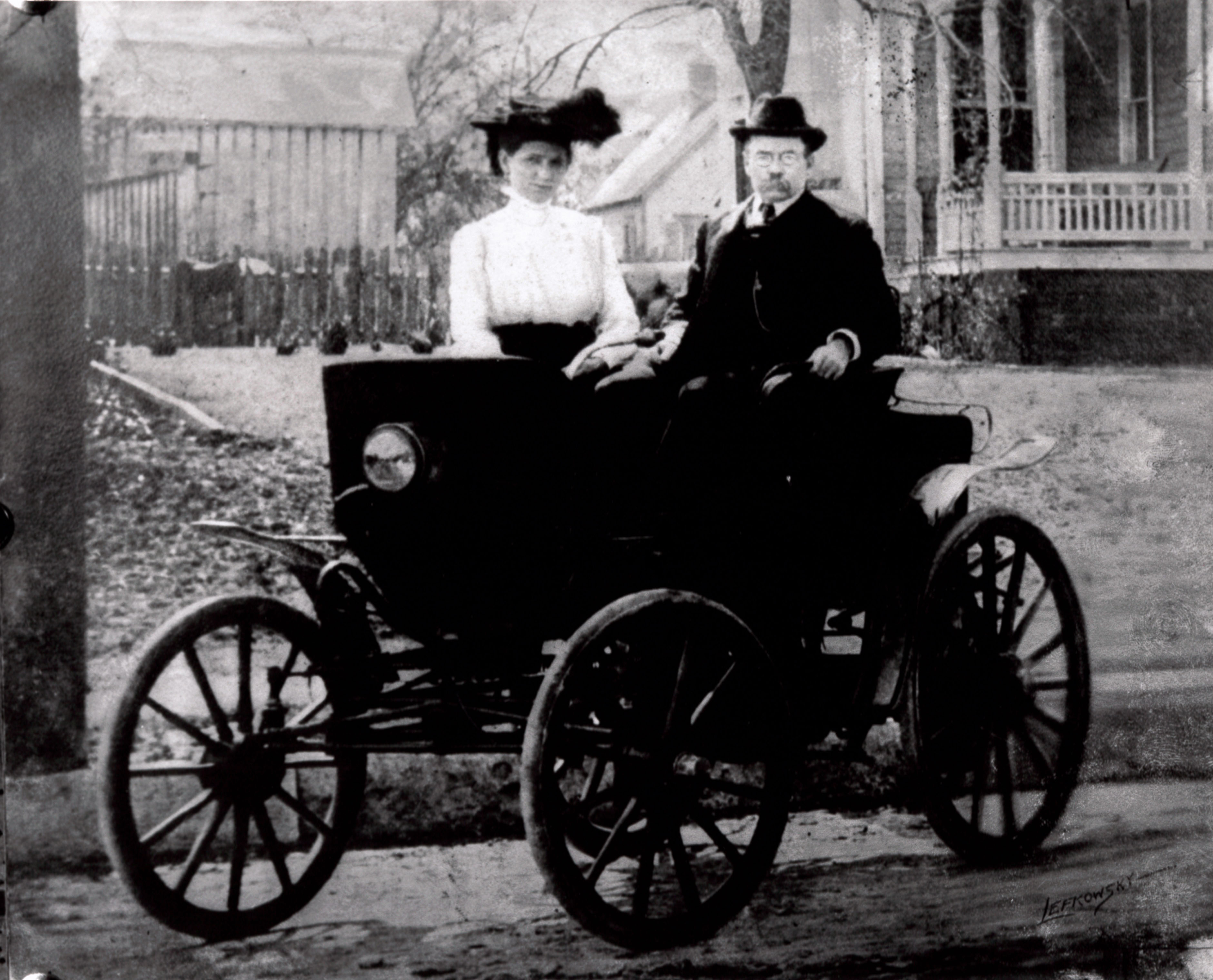BEAUMONTERS CELEBRATED AT EARLY CARNIVALS
By Judith Linsley
Since the 1880s, when they put on a strawberry festival, Beaumonters have held events to honor the good things about their town. By 1899, they decided to celebrate rice, an important crop. Beaumont merchants sponsored the rice festival, which was held in December.
The carnival committee chose a queen to reign over the festivities. The committee immediately passed the buck to a "committee of young men" who made the selection; they came up with Di McFaddin, a Beaumont belle.
Di was visiting in Victoria at the time, so according to the Beaumont Enterprise, "Mr. Simonton [committee chairman] communicated with her by telephone and found that she was willing to come home for the occasion and will be here on the eleventh." Interesting fact: Beaumont had long distance service in 1899.
The Enterprise commended the choice, saying "that of Beaumont's many fair ones, there are none who will fill the position of queen with more grace and dignity than Miss McFaddin. She…combines all the charms of a beautiful queenly woman." The newspaper went on to predict that the queen's coronation would be the highlight of the festival.
The next year the rice carnival was held in October. A Waverly Electric automobile belonging to J.C. Ward was the star of the big parade, being only the third automobile in Texas and the first in Beaumont. Ward had seen a Waverly in Nebraska and had learned how to drive it there before ordering one. It arrived by train (as everything did back then) in time for him to join the parade in progress.
In 1902 the carnival was held at the northeast edge of town at the corner of Liberty and Magnolia streets. The Eagles, the sponsoring organization, had moved it back to December again. Bad weather had marred the opening night, but cool, clear weather held for the duration of the festival, and a full moon brightened up the evening activities.
During the 1901 Spindletop oil boom, Beaumont had earned a reputation for being a rough place, one that locals were hoping to lose. One reporter even asserted that during public events, "there is less rowdyism and toughness than at any other time," assuring his readers, "The people are so good that the officers are fairly lonesome for something to do."
Midway activities were provided by the Gaskill-Mundy Company, praised by one Beaumonter as providing the "cleanest, most interesting and attractive" shows he had seen.
The carnival drew large crowds from a wide area. Railroads even ran special excursion trains from Lafayette and Lake Charles. Beaumont students got a half-day holiday from school. Ladies were encouraged to come and to wear walking skirts and comfortable hats. Revelers threw confetti and blew whistles.
The outstanding attendance at the Eagles carnival was cited by one Beaumonter as proof that carnivals were "the rage throughout the country" at that time. Perhaps so, but given the enthusiastic attendance at all of Beaumont's fairs and carnivals, it more likely proved that Beaumonters were always up for a celebration.
Judith Walker Linsley and Ellen Walker Rienstra, Beaumont: A Chronicle of Promise (Woodland Hills, California: Windsor Publications, 1982).
John H. Walker and Gwendolyn Wingate. Beaumont: A Pictorial History (Virginia Beach, Virginia: The Donning Company, 1983).
Beaumont Enterprise, December 9, 1899.
Beaumont Journal, December 9, 1902.
